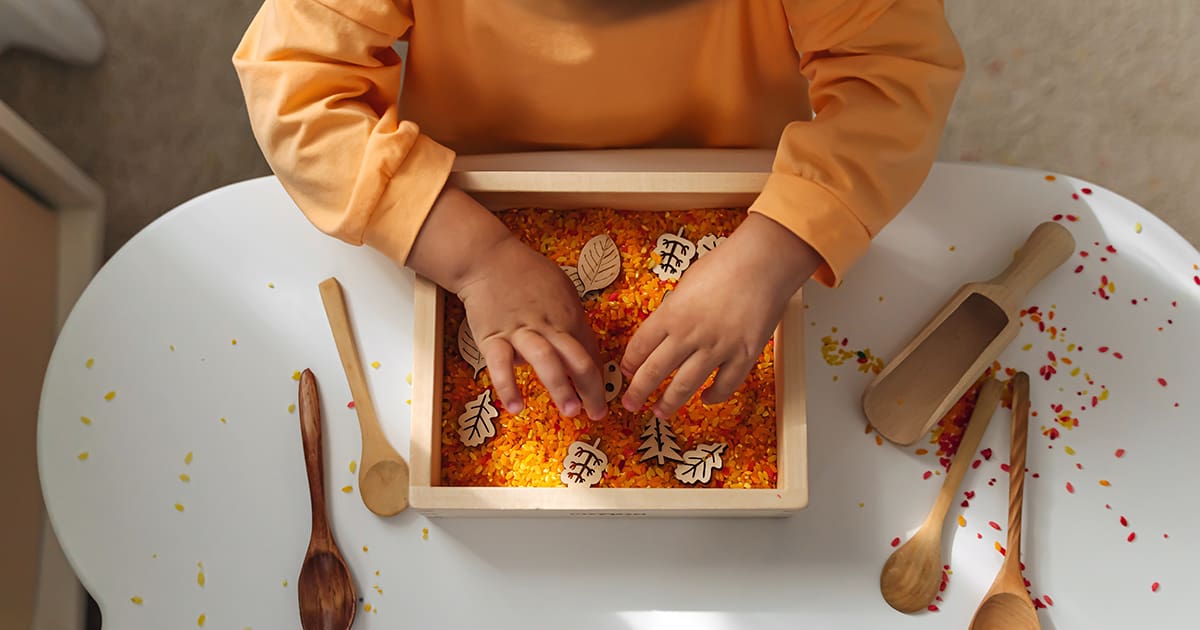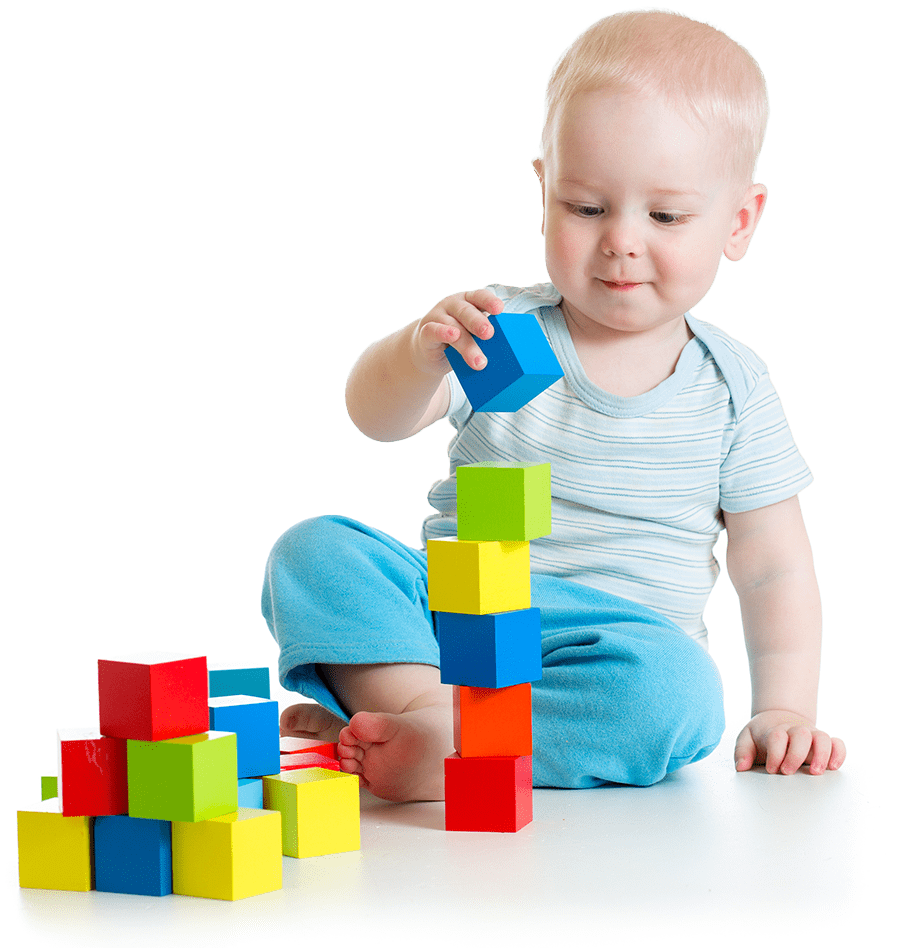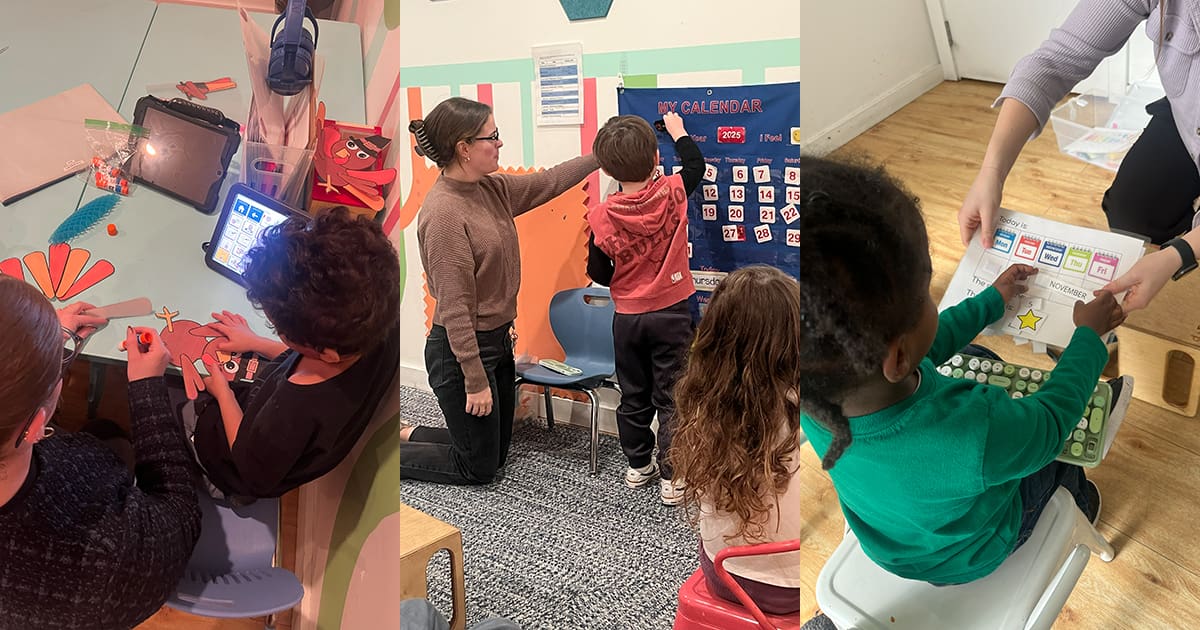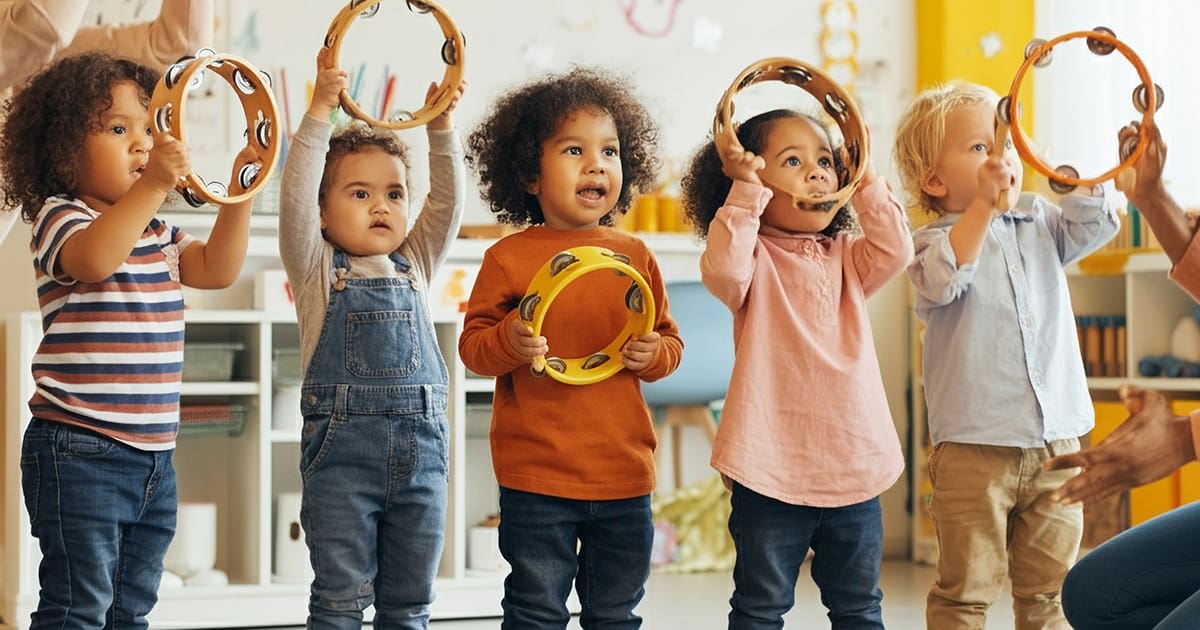Share this Post

For children, play is one of the most important ways they explore and learn. But for children with autism, sensory processing challenges, or developmental delays, play can take on an even deeper meaning. Sensory bins are powerful tools in a therapeutic preschool setting, offering more than just fun—they help children develop critical motor skills, improve emotional regulation, and foster creativity in a safe and supportive environment.
At CST Academy, sensory bins are a core part of our programs, helping children engage with the world around them through hands-on experiences. Let’s take a closer look at how sensory bins work, the benefits they offer, and how you can use them at home to help your child grow and thrive.
What Are Sensory Bins?
Sensory bins are containers filled with materials designed to stimulate a child’s senses, such as touch, sight, sound, and sometimes smell. These bins can contain a variety of materials, including rice, sand, water, beans, or shredded paper, along with toys and objects that encourage exploration. As children dig, scoop, and sort through the materials, they engage their sensory systems in a way that promotes learning and development.
Sensory bins are particularly effective for children with autism or sensory processing issues because they allow them to explore different textures and sensations in a controlled, stress-free environment.
Why Are Sensory Bins Important for Children’s Development?
Sensory play is more than just a way to keep children entertained—it supports key areas of development, including:
1. Improving Fine Motor Skills
Sensory bins encourage children to grasp, scoop, pour, and manipulate small objects, helping to strengthen the muscles in their hands and fingers. These activities improve fine motor skills, which are essential for tasks like writing, drawing, and self-care activities such as buttoning clothes or brushing teeth.
2. Enhancing Cognitive Development
As children explore the objects in a sensory bin, they engage in problem-solving and critical thinking. For example, sorting items by color, size, or texture teaches classification and comparison skills. They also develop early math concepts, such as counting and measuring, without even realizing they’re learning.
3. Promoting Language and Communication
Sensory bins provide opportunities for children to expand their vocabulary as they describe the objects they’re playing with or the sensations they feel. They can practice naming items, describing textures (e.g., soft, rough, smooth), and using action words like “pour,” “mix,” and “dig.” Group sensory activities can also encourage social interactions and collaborative play.
4. Encouraging Emotional Regulation
For children who experience sensory overload or have difficulty managing their emotions, sensory bins can be incredibly calming. The repetitive motions of scooping and sorting provide a soothing effect, helping children reduce anxiety and refocus their attention.
5. Supporting Sensory Integration
Sensory bins help children with sensory processing challenges integrate different sensory inputs, such as touch, sight, and sound, in a way that feels comfortable and engaging. Over time, this can improve their ability to process sensory information in everyday environments.
Types of Sensory Bins Used in Therapeutic Preschool Programs
Sensory bins can be customized to fit different themes, developmental goals, and sensory preferences. Here are some common types of sensory bins used at CST Academy:
1. Tactile Sensory Bins
These bins focus on stimulating the sense of touch using materials with varying textures, such as rice, beans, water beads, or sand.
Why They Work:
Tactile bins help children explore different sensations and textures, which can improve tactile processing and body awareness.
Activity Idea: Hide small toys or objects in the bin and have your child find them using their hands. Encourage them to describe how the objects feel.
2. Themed Sensory Bins
Themed bins are designed around a specific concept or story, such as a “farm,” “ocean,” or “construction site.” They often include small figures, toy animals, and other related objects.
Why They Work:
Themed bins spark imaginative play and can be used to teach new concepts, such as animal names or habitats.
Activity Idea: In a farm-themed bin, ask your child to find and sort the animals by type (e.g., “Can you find all the cows and pigs?”).
3. Water Sensory Bins
Water bins include floating objects, cups for pouring, and sponges for squeezing. They provide both tactile and auditory stimulation.
Why They Work:
Water play helps children develop fine motor control and hand-eye coordination while also offering a calming sensory experience.
Activity Idea: Add food coloring to the water and watch as your child mixes colors. This activity can also introduce basic science concepts, like how liquids blend.
4. Calming Sensory Bins
These bins are designed to help children relax and self-regulate. They often include soft materials, soothing colors, and gentle sensory inputs.
Why They Work:
Calming bins are ideal for children who need a break from overstimulation. The soothing textures and repetitive motions help reduce anxiety and improve focus.
Activity Idea: Fill the bin with smooth pebbles or soft cotton balls, and encourage your child to run their fingers through the materials as a calming exercise.
5. Sensory Bins for Sound Exploration
These bins incorporate materials that make noise, such as dried beans, rice, or small bells, allowing children to engage their sense of hearing.
Why They Work:
Sound bins help children develop auditory processing skills and learn to associate sounds with specific actions.
Activity Idea: Encourage your child to shake or stir the materials and describe the sounds they hear. You can even turn this into a rhythm or music-based activity.
How to Create a Sensory Bin at Home
Creating a sensory bin at home is simple, affordable, and highly customizable. Here’s what you’ll need:
Materials:
- A large, shallow container or bin
- A base material (e.g., rice, beans, sand, or water beads)
- Fillers such as small toys, spoons, cups, or scoops
- Optional: Food coloring, scented oils, or themed objects
Instructions:
- Fill the bin with the base material.
- Add fillers that align with the theme or goal of the activity.
- Encourage your child to explore freely and talk about what they find.
- Always supervise play to ensure safety, especially with younger children.
Pro Tip: Rotate the materials and themes regularly to keep the experience fresh and engaging for your child.
When to Use Sensory Bins
- During transitions: Help your child calm down before or after activities.
- As part of structured play: Incorporate sensory bins into learning activities to introduce new concepts.
- As a calming tool: Offer a sensory bin during moments of stress or overstimulation.
- To encourage independent play: Sensory bins provide a safe and engaging way for children to explore on their own.
Why Sensory Bins Are Effective in Therapeutic Preschool Programs
At CST Academy, sensory bins are a key component of our hands-on learning approach. They’re used to help children build confidence, develop essential skills, and experience joy in exploration. Our therapists carefully design each bin to support specific developmental goals, ensuring that every child benefits from meaningful sensory play.
Conclusion: Nurturing Growth Through Sensory Play
Sensory bins are much more than simple containers—they’re tools that open the door to exploration, creativity, and learning. By engaging a child’s senses, they help build the foundation for growth in communication, motor skills, and emotional regulation.
If you’d like to learn more about how sensory play is integrated into our therapeutic preschool programs, contact CST Academy today. Together, we can help your child discover the joy of learning through play.
Discover Our Pediatric Therapy & Autism Care
ABA Therapy
Support for children with autism.
Autism Evaluation
Expert assessments to identify child needs.
Pediatric Therapy Services
Speech, Occupational, Feeding, and Physical Therapy.
Therapeutic Preschool
A classroom environment designed for early learners with unique needs.

Find the Best Care for Your Child




